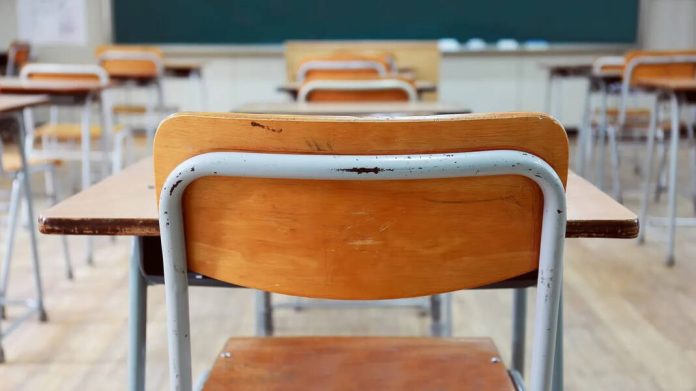New data shows school attendance across Indiana is improving, but thousands of Hoosier students are still missing multiple days — even weeks — of school each year.
The latest attendance numbers released by the Indiana Department of Education last month reported that 17.8% of K-12 students — roughly 219,00 kids — were “chronically absent” during the most recent 2023-24 school year, meaning they missed at least 18 days.
It’s the second year in a row that the number of chronically absent students went down, dropping from 19.2% in 2023, and 21.1% in 2022.
The department has not yet made available other attendance data.
A full attendance report released last year by the state agency, for example, showed that about 40% of students statewide missed 10 or more school days during the 2022-23 term. Those students do not meet the definition of “chronically absent,” however.
An ongoing issue
Student absences have been on the rise since the onset of the COVID-19 pandemic in Indiana and across the nation. Chronic absenteeism surged during the pandemic, nearly doubling to peak at 21.1% in 2022, according to IDOE.
Even so, Indiana’s rates were lower than the nationwide average.
The National Center for Education Statistics said that 72% of schools across the country reported an increase in chronic absenteeism in the 2021-22 school year compared to pre-pandemic levels, emphasizing that elevated rates of chronic absenteeism are “one of the biggest obstacles to the nation’s post-COVID academic recovery.” The worst attendance rates in Indiana and in schools across the United States were reported among elementary schoolers, according to state and national data.
Educators around the state say the reasons for absences vary, but family challenges some students face at home, along with hard-to-break tendencies to keep kids home when even mildly unwell — a habit borne out of the pandemic — are key factors. And schools are getting creative to try to combat the growing problem.
IDOE officials are also working on responses to improve school attendance, including development of a new “Attendance Insights” dashboard that breaks down weekly habitually truant and chronic absenteeism rates at the local and school levels. The state has already made the tool available to Hoosier school officials and plans to launch a public version later this year.
The Indiana Code specifically defines chronic absenteeism as being absent 18 or more days within a school year for any reason— a higher standard than “habitual truancy,” which is ten or more days without an excuse.
Under the “compulsory education” laws in Indiana, children must regularly attend school from the time they’re seven years old until they turn 18, with some exceptions.
But unless they’re excused, students who cut class too often could end up under a juvenile court’s supervision. Built-up absences could also prompt prosecutors to file misdemeanor charges against Hoosier parents, given that they are legally responsible for making sure their children go to school.
How will Indiana leaders respond?
State lawmakers were adamant to move bills in the 2024 session to help improve student literacy and bolster career readiness. That included the passage of Senate Enrolled Act 1, which will require schools to hold back third graders who do not pass the statewide IREAD test as part of a push to improve reading.
Legislative leaders have repeatedly said, too, that ensuring Hoosier kids actually show up to class continues to be a part of their priority agenda.
Education experts note that being absent as few as three days out of the school year affects test scores and overall academic performance. Getting to school every day also helps kids develop a routine and increases their influential engagement time with adults.
The student demographic groups with the largest gaps in state language arts and math testing since the pandemic are more likely to be chronically absent.
But policymakers have struggled to advance significant solutions for absenteeism.
The final draft of Senate Enrolled Act 282 – approved earlier this year — prompts Indiana school districts to take a tougher stance on student truancy, though it’s up to schools to decide how to craft and execute local policies.
The law calls for schools to intervene early when younger students have repeated absences without excuses. Parents of a student in grades K-6 who has missed five days of school within 10 weeks, without being excused, are to be notified by the school and required to create a plan to improve the student’s attendance.
The new statute also mandates that school districts create an absenteeism prevention policy, which could include wrap-around services, referrals to counselors or other social service help.
A violation of the law could result in a class B misdemeanor or punishable up to 180 days in jail and a fine of up to $1,000. Parents charged with educational neglect could face a level 6 felony, punishable by up to two and half years in prison and a fine of up to $10,000.
Generally, it’s up to local school districts to decide when students’ absences are excused, though state law requires schools to excuse absences for certain reasons, including illness, mental or physical incapacity, required court appearances, helping in elections, service as a page for the general assembly, participating in the state fair and up to 120 minutes per week of religious instruction.
It’s not yet clear what impacts the latest legislation might have on attendance rates.
District officials maintain that chronic absenteeism — which includes excused absences — continues to be a primary issue in Indiana schools. Many told lawmakers earlier this year that legislative action around the issue should be expanded to include chronically absent students, and not just those who are truant.
Others are pushing for lawmakers to expand chronic absenteeism enforcements to include middle and high school students, given that the new law only dealt with those in grades K-6.
By Casey Smith — The Indiana Capital Chronicle is an independent, not-for-profit online news organization that covers state government, policy and elections.





